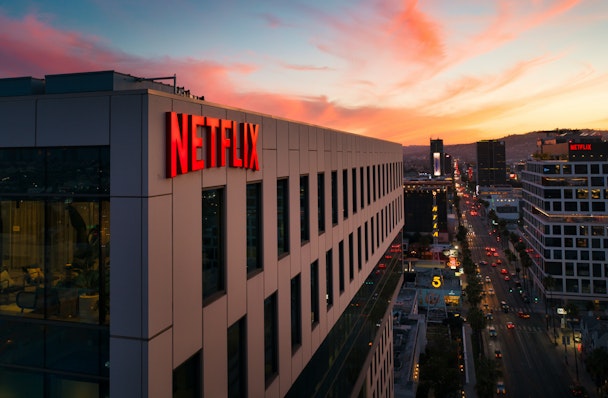What to expect from Netflix's critical earnings call today
Ahead of the much-anticipated Netflix second-quarter earnings call this afternoon, Lotame's connected television lead Hunter Terry spells out a handful of key predictions.

/ Venti Views
Netflix's quarterly earnings are slated to be released today.
Once accustomed to torrid revenue and profit growth, the company is now facing major challenges. How will the streaming giant weather the storm and what can we expect ahead of its Q2 earnings call?
Netflix is as predictable as streaming services come. The company's average revenue per user (ARPU) was reported last quarter at $14.91, $0.13 higher than the previous quarter and $0.10 higher than the one before that. Seems like progress, but it's only natural when the service consistently increases its subscription rates — in January, for instance, it raised rates for US customers by $1.00 for all three tiers, with the US representing roughly one-third of Netflix's total subscriber base of 222 million users.
Rate hiking has been the only tactic Netflix has been able to employ in its history as a streaming service. It's not ideal for the consumers, but when Netflix commands the majority of the streaming market globally — and boasts arguably one of the best content libraries — it can afford to do so. Well, at least somewhat.
There was a time when Netflix alone was producing premium streaming content to the masses, but that era has come and gone. Now, every streaming service has at least one tentpole to attract subscribers. The first season of Stranger Things was launched in 2016 and Netflix is still relying on the buzz it generated six years later.
The point is that the company should be cautious when it comes to rate increases, because the move has been shown to negatively impact subscriber volume. While Netflix was hoping to grow its subscriber count in 2022, it announced a loss of some 200,000 subscribers during its Q1 2022 earnings call in April, with subsequent predictions for losses of around two million for Q2.
Unfortunately for Netflix, revenue has been entirely tied to subscription costs, so while we are likely to see a slight increase to their ARPU in Q2 like with past quarters given raising subscription prices around the world, the total Netflix subscriptions will likely have diminished over the last three months, causing revenues to stagnate with raised ARPUs offsetting the subscriber loss.
For those thinking that Netflix will see favorable momentum in future earnings calls due to the introduction of lower cost ad-supported subscription models, think again. If viewed across the board with all other streaming services, the only player with a significantly higher ARPU than its own subscription cost is Roku (which sees a $42 ARPU with no actual subscription costs) — and such impressive performance can be attributed to the company's position as both a streaming service as well as a hardware and operating system provider. Others with ad-supported streaming options have ARPUs lower than their own subscription rates, meaning that while advertising does generate revenue for these businesses, it doesn't offset the difference in subscription tiers.
For Netflix to make any substantial gains in the increasingly crowded streaming landscape, it will need to follow the lead of its smaller competitor Roku and diversify its product. An ad-supported streaming tier is a necessary start, but there are many more opportunities for growth for the platform beyond this baby step. If Netflix believes it can rely on premium content alone to support its business in years to come, it will be caught in the streaming wars Squid Game.
Hunter Terry is vice-president of solutions consulting and CTV commercial lead at Lotame.
